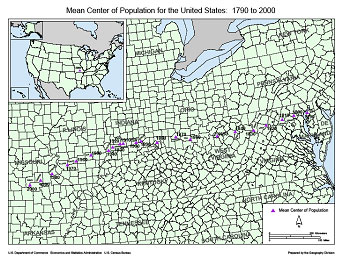1940 Census Fun Facts 1
- With 3,784,664 people, Missouri was the 10th largest state in 1940.
- In August 1939, the Census Bureau conducted a special census in two Indiana counties using questions proposed for 1940 census. The result of this test modified some questions and finalized the schedule design. (These schedules did not survive.)
- Officials agreed to add new questions on migration, income, fertility, education, social security, usual occupation, and unemployment.
- Between 1930 and 1940 the U.S. population dropped to a historical low growth rate of 7.3 percent, however, the population in Washington, DC increased by 36 percent.
Missouri's population growth dropped to 4.3 percent between 1930 and 1940, compared to the 6.6 percent growth during the previous decade. While St. Louis County grew by 30 percent and Columbia grew by 23 percent, the City of St. Louis experienced a slight decline (0.7 percent) and Kansas City grew by only 0.1percent.
- Internal migration redistributed nine Congressional House seats. Florida, North Carolina, Tennessee, California, New Mexico, Arizona, and Oregon all gained seats. Massachusetts, Ohio, Pennsylvania, Illinois, Oklahoma, Nebraska, Iowa, Kansas and Indiana each lost one seat.
- The population center of the United States in 1940 was Sullivan County, Indiana. Each decade the population center shifts further south and west. In 1980 it was located in Jefferson County, Missouri, near De Soto. The population center for the most recent census, 2010, is near Plato, in Texas County, Missouri.

- Transients were recorded starting on page 81 of each enumeration district.
- In April 1940, unemployment stood at 15 percent of the labor force and totaled 8 million.
- The Census worked with the Bureau of Vital Statistics to check accurate birth registration in each state. Census enumerators gathered information on infant cards including exact date of birth, exact place of birth, maiden name of mother and hospital of birth. Unfortunately, the Census Bureau disposed of these cards.
- The U.S. Census Bureau conducted a publicity drive using radio programs, newspaper advertisements, mass mailings and teacher involvement to encourage cooperation and participation in the census. The Three Stooges made a short film in 1940 titled "No Census No Feeling".
- The 1940 census fell on the 150th anniversary of census taking in America.
- Enumerator salaries ranged between .5 cents and .8 cents a person, depending on the geographic area and the schedule they were enumerating. Rural enumerators were paid more because of the greater distance they had to travel between farm households.